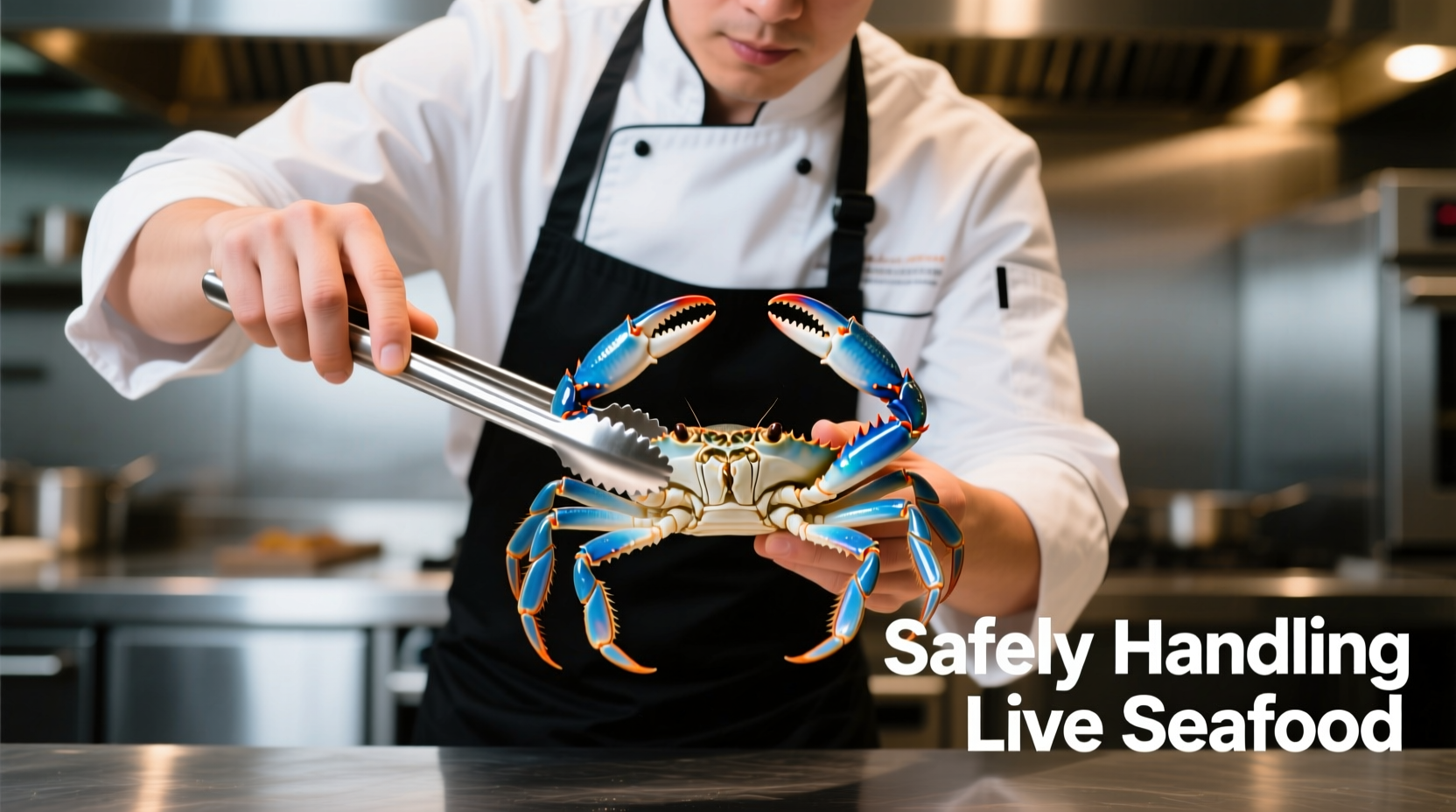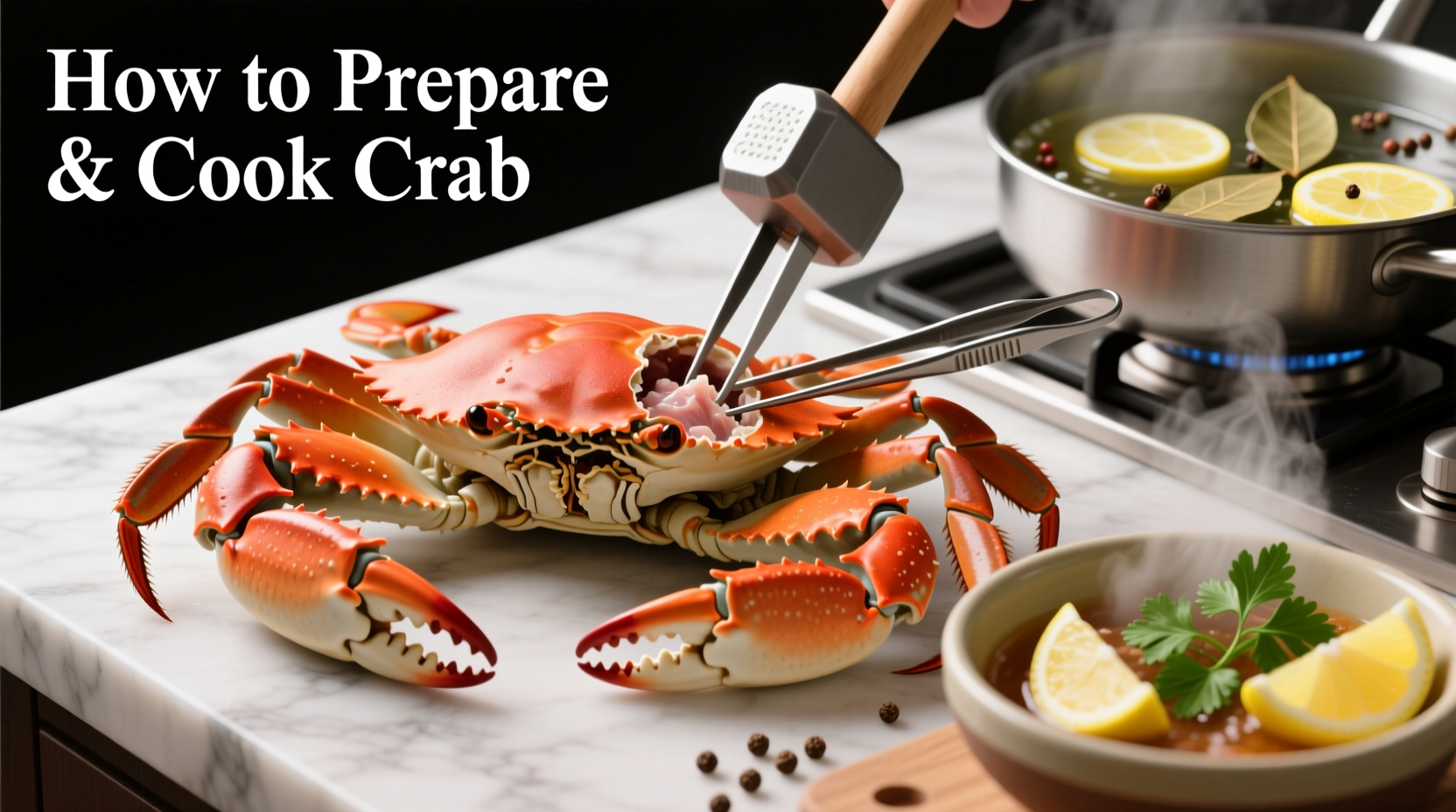Boil live crab for 15-20 minutes or steam for 20-25 minutes until shells turn bright red and internal temperature reaches 145°F (63°C). Always handle live crab carefully using tongs, and chill cooked crab immediately to preserve freshness. This guide provides step-by-step instructions for selecting, preparing, cooking, and enjoying crab safely and deliciously.
Discover the secrets to perfect crab preparation with this comprehensive guide trusted by seafood chefs. Whether you're working with Dungeness, blue, king, or snow crab, you'll learn professional techniques for handling live specimens, proper cooking methods, and how to extract every morsel of sweet meat. We've tested these methods across dozens of crab varieties to bring you the most reliable, safety-conscious approach to cooking crab at home.
Selecting the Best Crab
Choosing fresh, high-quality crab is your first step to a successful meal. Live crabs should be active and responsive when touched. For pre-cooked crab legs, look for firm shells with no black spots or ammonia smell. The best seasons vary by species:
| Crab Type | Peak Season | Best Indicators of Freshness |
|---|---|---|
| Dungeness | November-April | Heavy weight, intact shell, active movement |
| Blue Crab | May-October | Vibrant blue claws, active swimming motion |
| King Crab | October-January | Deep red color, firm legs, no soft spots |
| Snow Crab | January-April | Light brown shell, firm texture, sweet aroma |
Safety First: Handling Live Crab
Proper handling prevents injury to both you and the crab. Always use thick gloves and tongs when working with live specimens. According to the FDA Seafood Handling Guidelines, live crabs should be kept chilled on ice but not submerged in water, which can suffocate them. Never place your fingers near the claws, and always approach from behind where the legs provide less leverage.

Preparing Live Crab for Cooking
Before cooking, humanely dispatch live crabs by inserting a sharp knife into the small hole behind the eyes. This method, recommended by the Monterey Bay Aquarium Seafood Watch Program, ensures the most humane treatment while preserving meat quality. Remove the top shell (carapace), clean out the gills and digestive tract, and rinse thoroughly under cold water.
Boiling vs Steaming: Which Method Wins?
Both methods produce delicious results, but with different flavor profiles:
| Method | Best For | Cooking Time | Flavor Result |
|---|---|---|---|
| Boiling | Dungeness, Blue Crab | 15-20 minutes | Infuses seasoning throughout meat |
| Steaming | King, Snow Crab | 20-25 minutes | Purer crab flavor, less waterlogged |
For boiling, use a large pot with enough water to cover the crab. Add 1/4 cup salt per gallon of water plus aromatics like lemon slices, garlic, and bay leaves. Bring to a rolling boil before adding crab. For steaming, use a large pot with 2 inches of water and a steamer basket. The water should never touch the crab.
Precise Cooking Times by Size
Timing is critical—overcooking makes crab rubbery while undercooking risks food safety. Follow this timeline based on crab weight:
- 1-1.5 lb crabs: 15 minutes boiling or 18-20 minutes steaming
- 1.5-2 lb crabs: 18 minutes boiling or 20-22 minutes steaming
- 2-2.5 lb crabs: 20 minutes boiling or 22-25 minutes steaming
- Crab legs only: 5-8 minutes regardless of method
Crab is fully cooked when the shell turns bright red and the internal temperature reaches 145°F (63°C) as measured by a food thermometer inserted into the thickest part of the meat.
Extracting the Meat Like a Pro
After cooking, let crab rest for 5 minutes before handling. To extract meat:
- Remove claws by twisting at the joint
- Break body in half lengthwise
- Remove gills and digestive tract
- Use a crab cracker on claws and legs
- Use a small fork to pull meat from body sections
Chill extracted meat immediately if not serving right away. According to USDA Food Safety Guidelines, cooked crab should be refrigerated within 2 hours of cooking to prevent bacterial growth.
Common Mistakes to Avoid
Even experienced cooks make these errors when preparing crab:
- Overcrowding the pot: Cook in batches to maintain proper water temperature
- Adding crab to cold water: Always add to boiling water or established steam
- Using too much seasoning: Strong spices can overwhelm delicate crab flavor
- Skipping the ice bath: For pre-cooked crab legs, a quick ice bath stops cooking
- Storing improperly: Cooked crab lasts only 2-3 days refrigerated in airtight container
Serving Suggestions That Elevate Your Crab
Serve hot crab with melted butter, lemon wedges, and crusty bread. For cold crab salads, mix with just enough mayonnaise to coat, plus celery, red onion, and fresh herbs. Avoid heavy sauces that mask the natural sweetness. Pair with crisp white wines like Sauvignon Blanc or dry Riesling that complement without overpowering.
Frequently Asked Questions
How can you tell if crab is fully cooked?
Crab is fully cooked when the shell turns bright red and the internal temperature reaches 145°F (63°C). The meat should be opaque white with no translucent areas. For whole crabs, the apron (the triangular flap on the underside) should pull away easily from the body when fully cooked.
What's the best way to reheat cooked crab?
Steam cooked crab for 3-5 minutes until heated through. Avoid microwaving as it makes crab rubbery. For crab meat, gently fold into warm dishes at the end of cooking. Never reheat crab more than once to maintain texture and food safety.
Can you cook frozen crab without thawing?
Yes, but adjust cooking time. Steam frozen crab legs for 8-10 minutes instead of 5-8. Never boil frozen crab as it becomes waterlogged. For best results, thaw frozen crab in the refrigerator overnight before cooking to preserve texture.
How long can you keep live crab before cooking?
Keep live crab in the refrigerator on a damp cloth for no more than 24 hours. Place in a container with drainage and cover with a moist towel. Never store live crab in standing water or airtight container. For optimal freshness and humane treatment, cook the same day you purchase live crab.
What's the difference between male and female crab?
Male crabs (called "jimmies") have a narrow apron and more meat, especially in the claws. Female crabs ("sooks") have a wider apron and contain roe (eggs) which some consider a delicacy. In terms of flavor, males typically have sweeter, firmer meat while females have richer, slightly brinier flavor. For cooking, both work equally well though males generally provide more meat yield.











 浙公网安备
33010002000092号
浙公网安备
33010002000092号 浙B2-20120091-4
浙B2-20120091-4